 fr
en
sp
it
fr
en
sp
it
Davide VITALE
- Hiking
- Snowshoeing
- Canyoning
- Rock climbing
- Via ferrata
- Mountaineering
- Ice climbing
Peñas
UIAGM mountain guide based in La Paz, Bolivia, I accompany the passengers of our small family agency.
I offer the best quality of experience by combining a solid knowledge of the Andean peaks and safety techniques with special itineraries and alternative cultural destinations for the most curious and demanding travelers.
Mountaineering, rock climbing and ice climbing, trekking, mountain biking, sailing catamaran, canyoning, archaeology and many other activities, from the snowy peaks of the Andes to the Yungas jungle, Bolivia is one of the mega different countries in the world that should be enjoyed without moderation.
Bolivia is a country of extraordinary diversity. There are four main mountain ranges and several dozen secondary ranges, an incredible variety of different landscapes and ecosystems from the Andes to the Amazon, 36 officially recognised indigenous languages and the largest salt desert in the world (Uyuni). Bolivia naturally attracts off-the-beaten-track mountain sports and hiking enthusiasts.
Situated at 4000 metres above sea level, 2 hours drive from La Paz (the seat of government but not the capital of Bolivia), Peñas is a wonderful little village of about 100 Aymara peasant families who devote themselves to growing potatoes and raising a few skinny cows and many haughty-looking llamas. The proximity of Lake Titicaca mitigates the typical temperature differences of the Altiplano.
Peñas was already populated 2500 years ago, as evidenced by the numerous rock paintings of the Chiripa culture and the pre-Columbian paths scattered over the hills. During the Spanish colonisation, a baroque church made of mud bricks was built. The village was used as a post office to change horses on the road from La Paz to the fabulous gold mines of Illampu. In 1781, the rebellion led by the indigenous hero Tupak Katari failed and he was quartered in the village square. Bolivia became independent in 1825, but the feudal system was not effectively abolished until after the agrarian reform of 1952.
Today Peñas is suffering from a severe rural exodus, like most traditional Andean regions. Adventure tourism represents a viable alternative to reactivate the local economy, offering young people interesting and rewarding work in their home region. Managed by a Bolivian university, the High School of Tourism was established in 2017. It offers a quality boarding education to 23 students (more than half of them are girls) from the surrounding area.
For hikers and climbers in the acclimatisation phase, Peñas occupies a strategic position, close to the Cordillera Real and Lake Titicaca as well as to the city of La Paz. More than 150 climbing routes of all levels have been opened on the surrounding sandstone cliffs. Several treks have been marked out by the students of the university as well as a mountain bike circuit. The inhabitants are organised in an association and can rent rooms to foreign visitors. The Creole gastronomy, a mixture of indigenous and Spanish traditions and ingredients, is always original, surprising and nourishing.
The Cordillera Real has 7 peaks over 6000 meters (Illampu, Ancohuma, Waukana, Chearoko, Chachacomani, Huayna Potosi and Illimani) and an infinite number of lower peaks, generally covered by glaciers. Many treks are available, the best known being the Transcordillera, which in 21 days links Sorata (at the foot of Illampu) and Pinaya (at the foot of Illimani), over 18 high passes. Except in the Condoriri massif, which is more frequented, the nights are generally spent in tents, with mules carrying the bags. Huayna Potosi is the most accessible summit, it can be climbed in 2 days and reached by bus. For all the others you will need at least 4 days and a certain amount of logistics, notably a private vehicle.
The Cordillera Apolobamba is located on the border with Peru. Isolated and little frequented, it shelters the villages of the Kallawayas healers and legendary gold mines swallowed by snow and ice. There are many vicuñas and a multitude of microclimates and ecosystems. The accompaniment of a local guide is practically indispensable. Maps are rarely updated and public transport is sporadic. The most famous treks cover the entire range from north to south (14 days) and end in the thermal waters of the charming Quechua town of Charazani. The most impressive mountains are Chaupi Orko and Cololo.
The Cordillera Occidental is essentially volcanic. It lies along the border with Chile in the southwest of the country in a beautiful environment of vast deserts and salt lakes. The Sajama National Park is the most accessible part, around the village of the same name. The Nevado Sajama and the twins Parinacota and Pomerape are the only ones to preserve a small ice cap. The Uturuncu stratovolcano is seriously suspected of being responsible for the disappearance of the dinosaurs. The peaks of the region were used as burial sites and archaeologists have found mummies there.
The Cordillera Quimsa Cruz is relatively lower. The highest peaks are "barely" 5600 meters high. It is, however, a small paradise for adventure climbers. The granite walls are of excellent quality and well exposed to the sun. The base camps of Kuchu Mocoya and Laguna Chilliwani are accessible by car. The Puya Raimundii, an exceptional plant of the Bormeliaceae family with a flowering stem of up to 9 metres and 20,000 flowers, can be seen here.
The name "Yungas" refers to the (very) humid tropical forests that cover the foothills of the Andes descending towards the Amazon. It is a region of striking contrasts, where you can walk from eternal snow to banana trees in a few hours. Canyoning and rafting are practiced here. The best known treks are the pre-Columbian Choro (3 days), Takesi (2 days) and Yunga Cruz (7 days) trails. In the past, these solid paved paths were used by caravans of llamas who exchanged the products of the highlands (salt, silver, potatoes, quinoa...) for those of the lowlands (coca leaves, fruits, flowers, feathers...). Canyoning and rafting are also practiced here.
Offers without scheduled departures
-
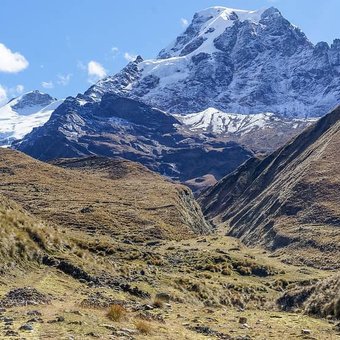
Trekking in the Apolobamba Cordillera • 8 days
Hiking
Bolivia
from 869 € / p. from 1 to 10 persons
No departures planned ? Propose me your dates -
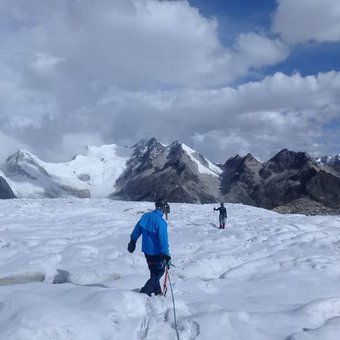
Mountaineering in Bolivia: Chachacomani and Chearoco • 7 days
Mountaineering
Bolivia
from 869 € / p. from 1 to 10 persons
No departures planned ? Propose me your dates -
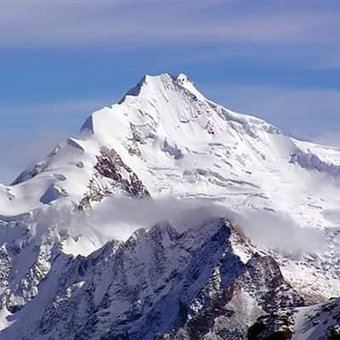
Mountaineering in Bolivia : climbing Huayna Potosi • 3 days
Mountaineering
Bolivia
from 395 € / p. from 1 to 10 persons
No departures planned ? Propose me your dates -
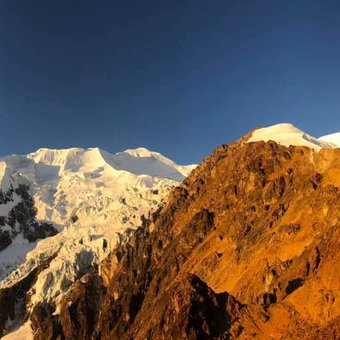
Mountaineering in Bolivia: climbing Nevado Illimani • 3 days
Mountaineering
Bolivia
from 574 € / p. from 1 to 10 persons
No departures planned ? Propose me your dates -
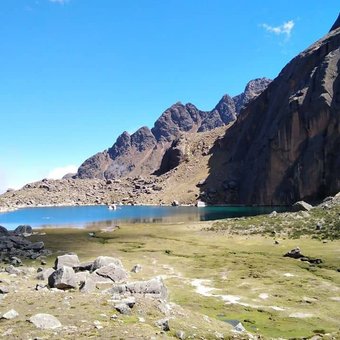
Traditional climbing in the Quimsa Cruz Cordillera • 6 days
Rock climbing
Bolivia
from 695 € / p. from 1 to 10 persons
No departures planned ? Propose me your dates -
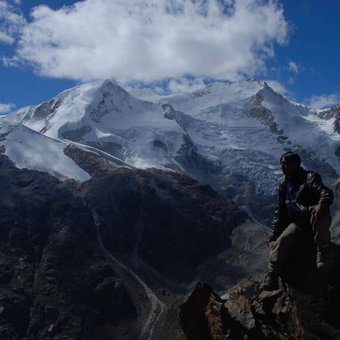
Trekking in the Cordillera Real (Bolivian Andes) • 5 days
Hiking
Bolivia
from 517 € / p. from 1 to 10 persons
No departures planned ? Propose me your dates -
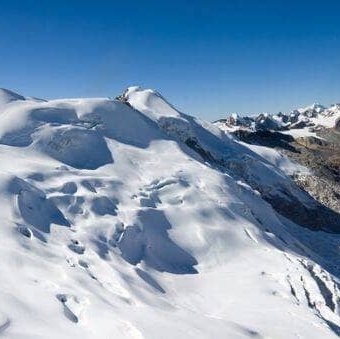
Mountaineering in the Cordillera Oriental (Bolivia) • 3 days
Rock climbing Mountaineering
Bolivia
from 395 € / p. from 1 to 10 persons
No departures planned ? Propose me your dates -
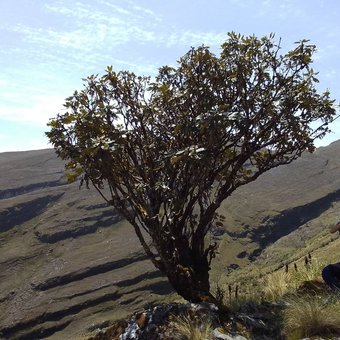
Yunga Cruz pre-Inca trekking • 4 days
Hiking
Bolivia
from 350 € / p. from 1 to 10 persons
No departures planned ? Propose me your dates -
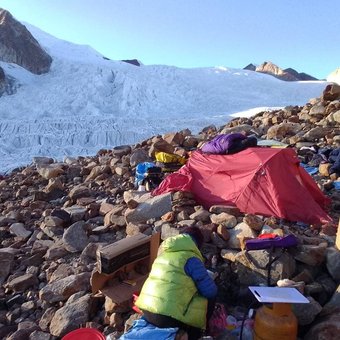
Mountaineering in Bolivia: climbing Ancohuma • 8 days
Mountaineering
Bolivia
from 1203 € / p. from 1 to 10 persons
No departures planned ? Propose me your dates -
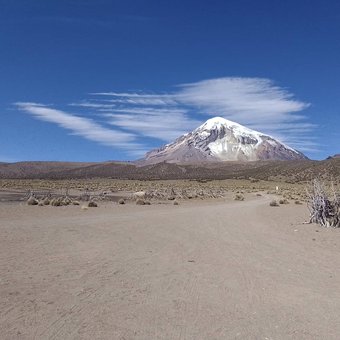
Mountaineering in Bolivia: climbing Sajama volcano • 6 days
Mountaineering
Bolivia
from 1203 € / p. from 1 to 10 persons
No departures planned ? Propose me your dates

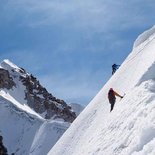
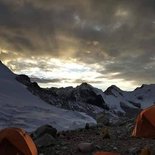
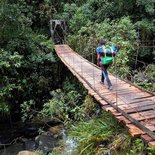
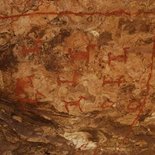
Comments (2)
Leave a commentDeparture : ascension du Chachacomani Report
Tout a été préparé aux petits oignons pour notre groupe. Accueil, prêt de matériel, dégustation de produits locaux, transport, organisation des camps, pédagogie, cuisine, accompagnement sur le glacier. Bref Davide est un véritable professionnel toujours souriant et disponible.La prestation offerte est incroyable et le rapport qualité prix défi toute concurrence.
Dans cette vallée nous n'avons rencontré personne, le dépaysement est assuré. Idem sur le sommet techniquement accessible qui n'est pas tellement couru, on avait la montagne pour nous... Chaudement recommandé !
Departure : Chachacomani Report
Fait avec Davide Vitale un trek de 6 jours du 30 avril au 5 mai 2022, avec ascension le 4 mai du Chachacomani. Cela a été un voyage fabuleux, remarquablement organisé. La progression et l'adaptation à l'altitude avaient été bien préparées et bien qu'un peu difficile pour moi (65 ans), mon fils en a parfaitement profité et a pu aller sans encombre au sommet du Chachacomani (6074m) pendant que je restais au camp d'altitude à 5200m.
Grâce à sa profonde connaissance du pays, de sa culture et de sa langue, Davide nous a fait découvrir des lieux hors des sentiers battus.
Je recommande chaudement Davide comme guide de montagne et passeur de culture.
Un grand Merci pour ce voyage inoubliable.